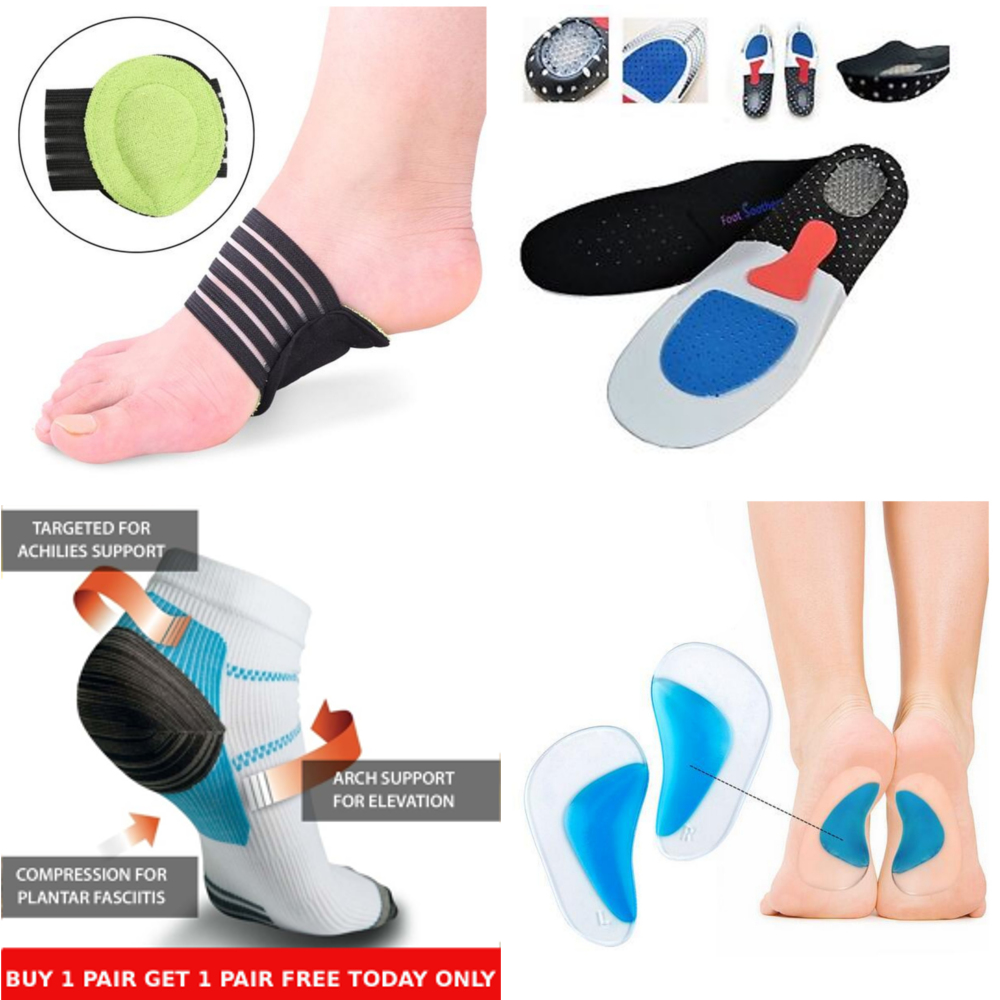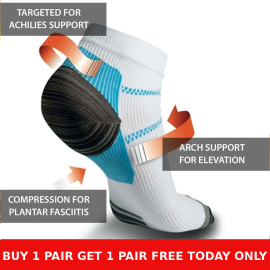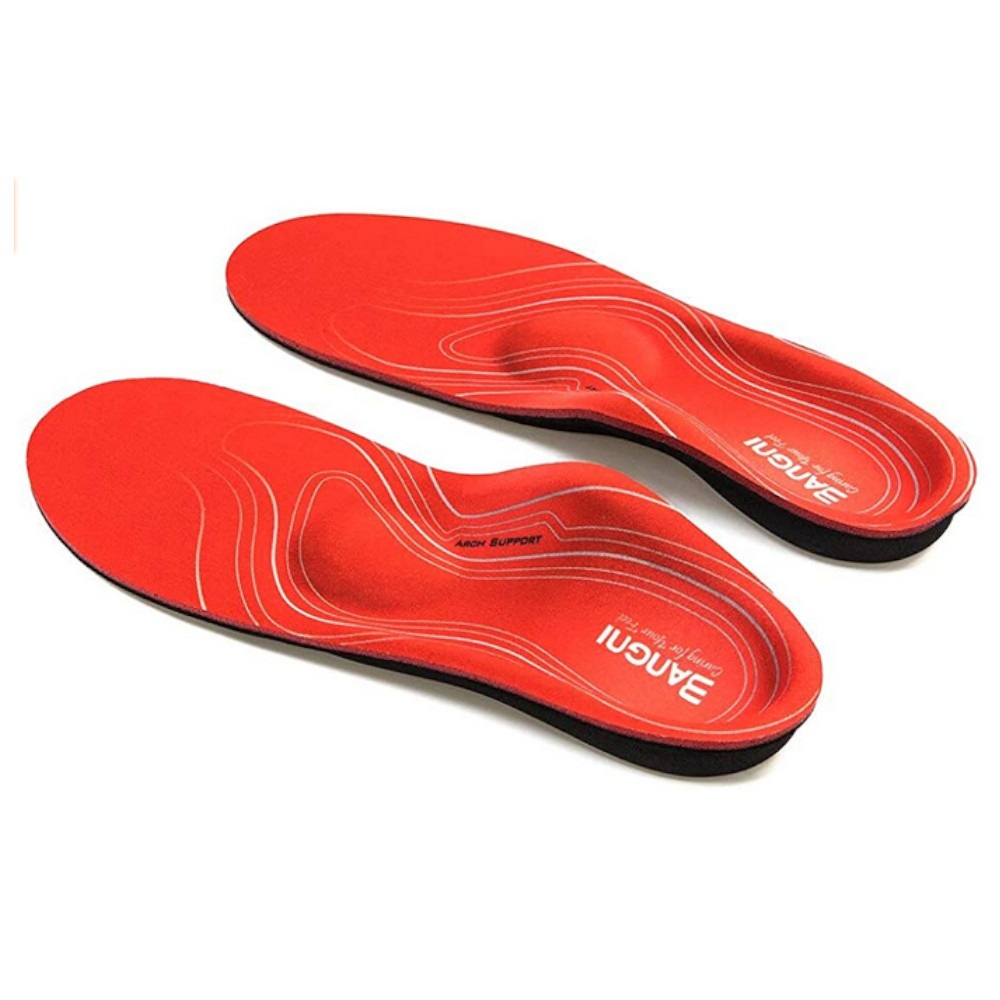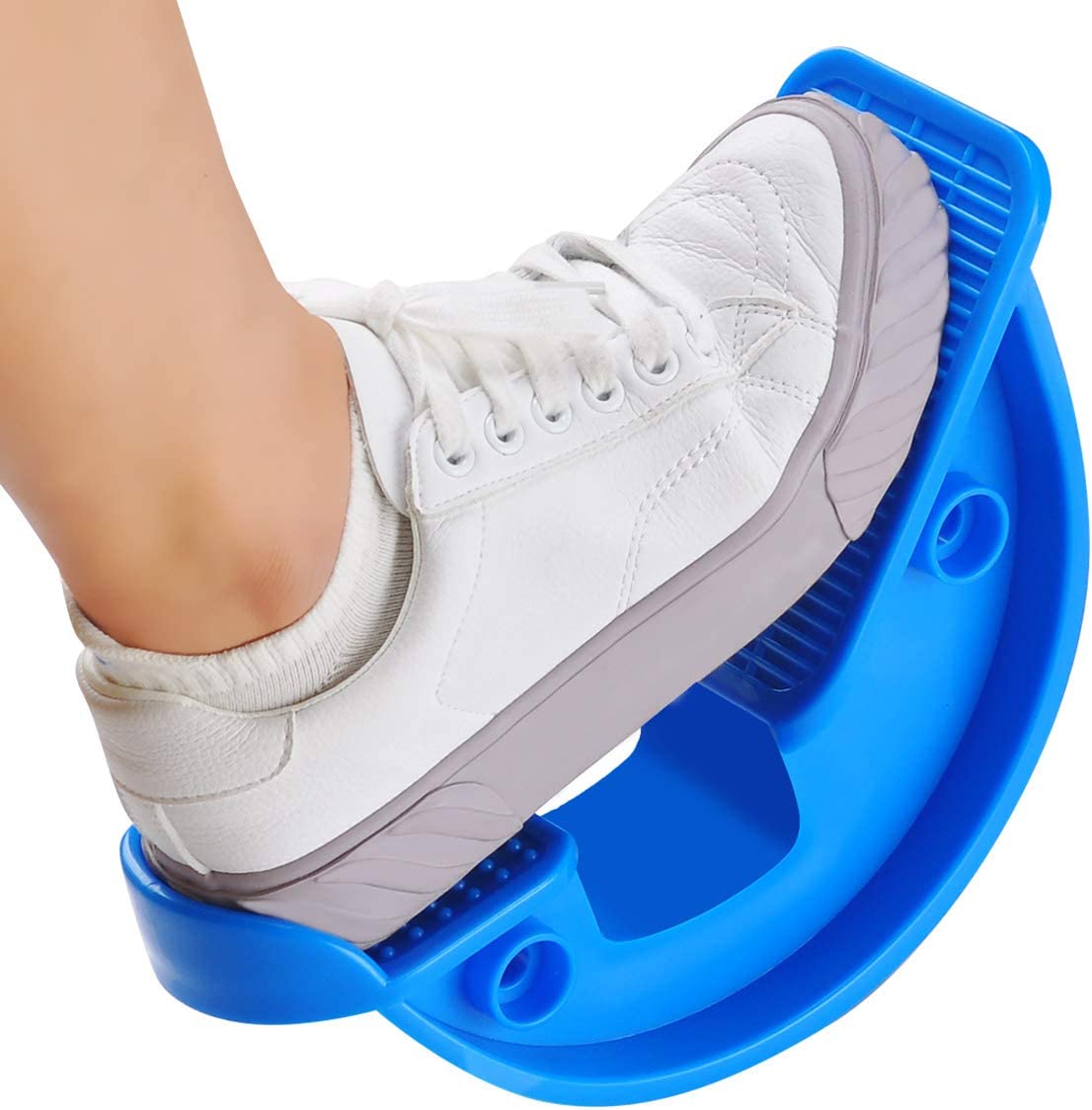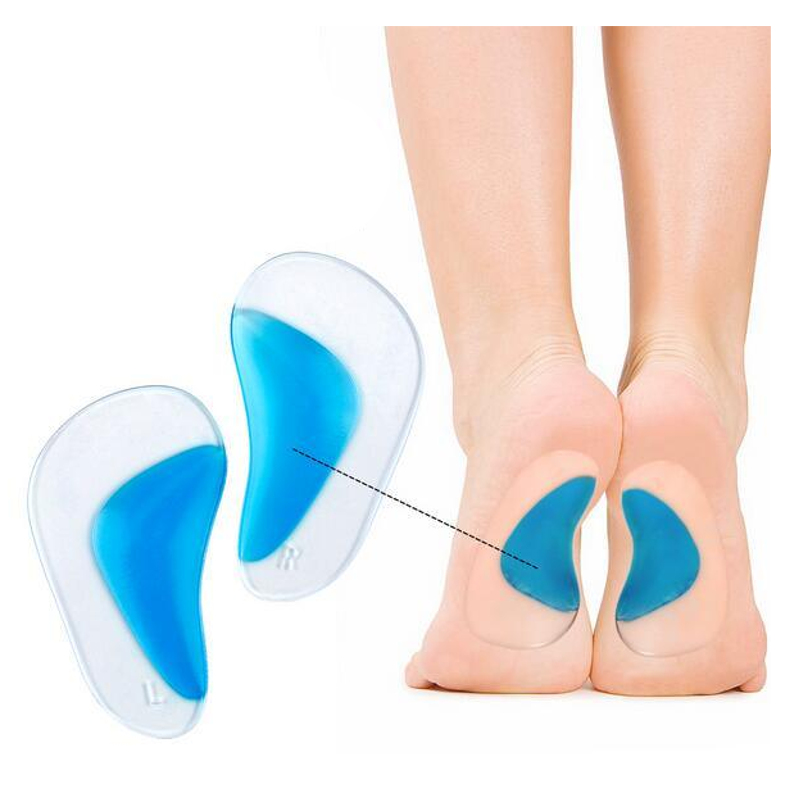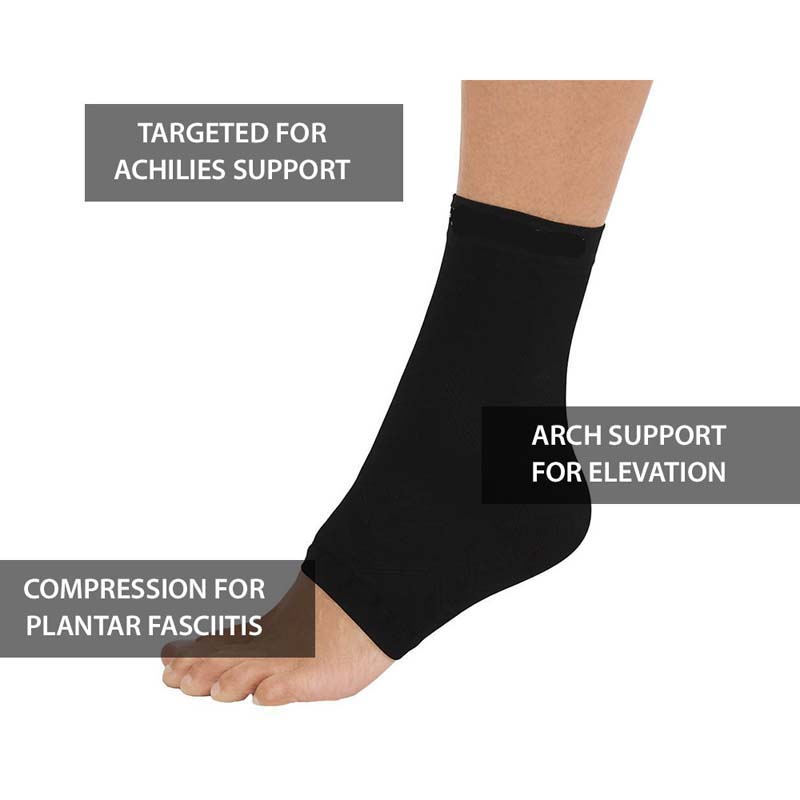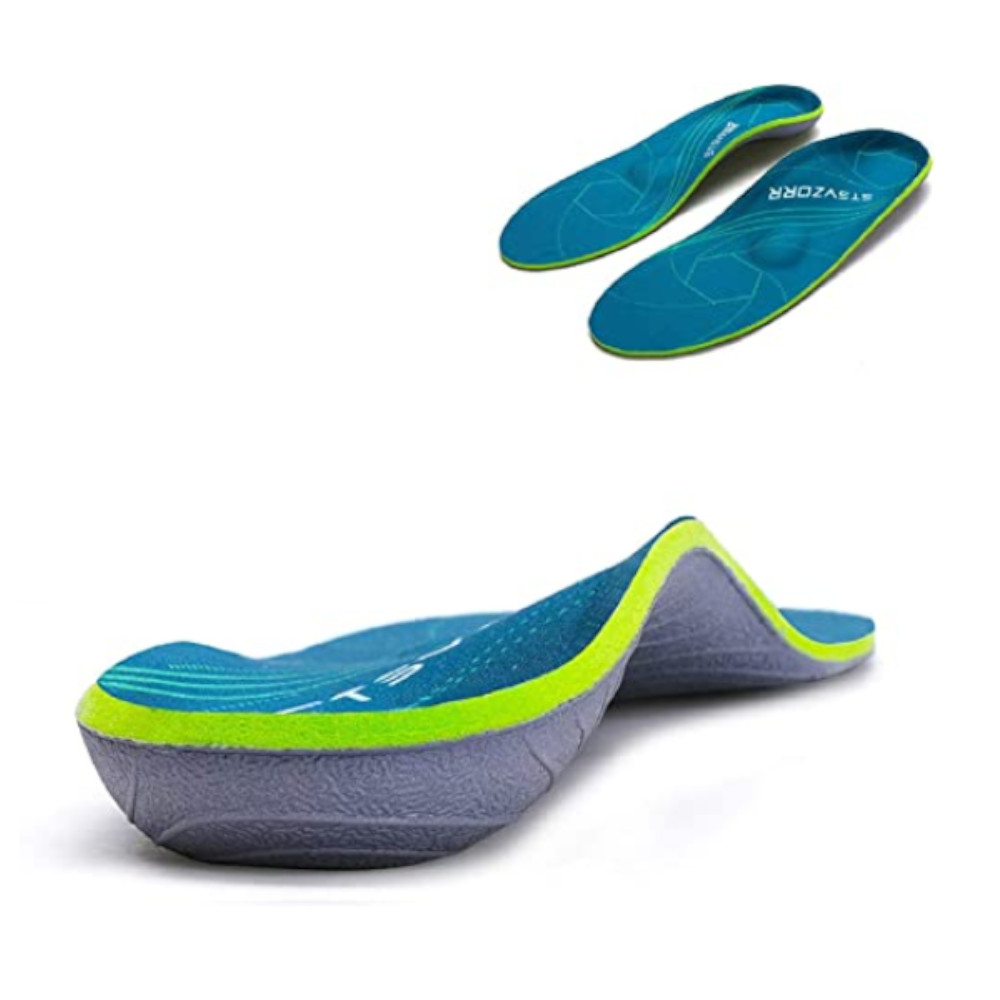Causes of Achilles Tendonitis and Ankle Pain
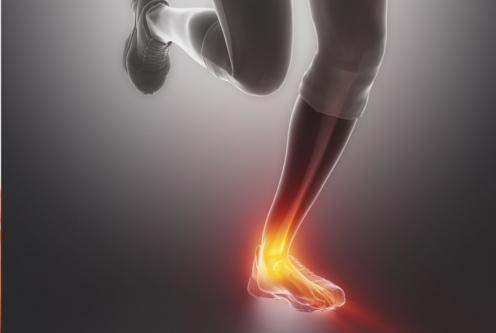
Featured Products for Plantar Fasciitis Foot Pain Relief
Our feet are the unsung heroes, carrying us through lifes adventures. However, when heel pain strikes, it can be a glaring reminder that even our steadfast feet are not invincible. Two common culprits behind heel discomfort are plantar fasciitis and heel spurs. Lets delve into the causes of these conditions to better understand the origins of the pain that may be slowing your stride.
Plantar Fasciitis: The Inflammation Conundrum
-
Excessive Foot Strain:
- Cause: Plantar fasciitis often results from repetitive strain on the ligament that supports the arch of your foot. This strain can stem from activities like running, dancing, or standing for extended periods.
-
Improper Footwear:
- Cause: Ill-fitting shoes with inadequate arch support can contribute to plantar fasciitis. High heels, flip-flops, or worn-out shoes may alter your foot mechanics, placing undue stress on the plantar fascia.
-
Flat Feet or High Arches:
- Cause: Structural issues, such as flat feet or high arches, can impact weight distribution and contribute to plantar fasciitis. These conditions may alter the way forces are transmitted through the feet.
-
Tight Calf Muscles:
- Cause: Tightness in the calf muscles can tug on the Achilles tendon, affecting the mechanics of the foot and increasing stress on the plantar fascia.
-
Obesity:
- Cause: Carrying excess weight can strain the plantar fascia, leading to inflammation and pain. Maintaining a healthy weight is crucial for overall foot health.
Heel Spurs: The Bony Protrusions
-
Prolonged Plantar Fasciitis:
- Cause: Heel spurs often develop as a result of long-term plantar fasciitis. The ongoing inflammation and pulling of the plantar fascia at its attachment point on the heel bone can stimulate the growth of a bony protrusion.
-
Age and Wear-and-Tear:
- Cause: Over time, the wear-and-tear on the heels protective fat pad can lead to the development of heel spurs. This is more common as individuals age.
-
Biomechanical Factors:
- Cause: Abnormal foot mechanics, such as excessive pronation (rolling inward of the foot) or supination (rolling outward), can contribute to the formation of heel spurs.
-
Poor Footwear:
- Cause: Wearing shoes with inadequate arch support or those that do not cushion the heel properly can contribute to the development of heel spurs, especially in individuals predisposed to the condition.
-
Physical Activity:
- Cause: Certain activities that place repetitive stress on the heel, such as running or jumping, can increase the risk of developing heel spurs.
Conclusion:
Understanding the causes of plantar fasciitis and heel spur pain is the first step towards effective management and prevention. Whether its addressing foot mechanics, choosing supportive footwear, or incorporating stretches and exercises into your routine, taking proactive steps can go a long way in ensuring your feet remain steadfast companions on your journey through life. If heel pain persists, seeking advice from a healthcare professional is crucial for a tailored approach to your specific situation. Your feet deserve the care and attention that will keep them pain-free and ready for the adventures that lie ahead.
Featured Products for Plantar Fasciitis Foot Pain Relief
Latest Blogs
- Taking a Stand Against Heel Pain: Practical Solutions
- Happy Heels, Happy Life: Banishing Foot Pain for Good
- The Road to Relief: Strategies for Combating Heel Pain
- Heel to Toe Wellness: Tackling Foot Pain Head-On
- Foot Pain Decoded: Understanding the Signals Your Feet Send
- Soothing Steps: Natural Remedies for Heel and Foot Pain
- Putting Your Best Foot Forward: Managing Heel Discomfort
- The ABCs of Happy Feet: Beating Heel and Foot Pain
- From Heel to Toe: Navigating Common Foot Pain Issues
- Taking a Step Back: Causes and Remedies for Heel Pain
- Footloose and Pain-Free: Tips for Happy Heels and Feet
- Soleful Solutions: A Guide to Alleviating Heel and Foot Discomfort
- Stepping Into Comfort: Understanding Heel and Foot Pain
- From Pain to Progress: Inspiring Plantar Fasciitis Journeys
- Living a Full Life with Plantar Fasciitis: Success Stories
- Plantar Fasciitis and Exercise: Finding the Right Balance
- The Impact of Stress on Plantar Fasciitis Symptoms
- Plantar Fasciitis: When to Seek Professional Help
- Inflammatory Foods and Plantar Fasciitis: What to Avoid
- Ergonomics and Plantar Fasciitis: A Comprehensive Guide
- The Importance of Rest in Plantar Fasciitis Recovery
- Traveling with Plantar Fasciitis: Tips for Happy Feet
- Plantar Fasciitis and Your Sleep: Improving Rest Quality
- The Psychological Aspect of Living with Plantar Fasciitis
- Plantar Fasciitis and High-Impact Activities: Navigating Risks
- How to Stay Active with Plantar Fasciitis: Practical Tips
- Plantar Fasciitis and Aging: Strategies for Seniors
- Cryotherapy for Plantar Fasciitis: Icy Relief for Your Feet
- Aquatic Exercise for Plantar Fasciitis: Dive into Healing
- Mindfulness and Meditation for Plantar Fasciitis Relief
- Heel Pain 101: A Guide to Plantar Fasciitis
- Finding Relief - Plantar Fasciitis Home Remedies
- The Emotional Toll of Chronic Plantar Fasciitis
- Post-Workout Foot Care for Plantar Fasciitis Sufferers
- DIY Foot Massage Techniques for Plantar Fasciitis
- From Diagnosis to Recoveryc- Navigating Plantar Fasciitis
- Plantar Fasciitis in Children Signs and Solutions
- Plantar Fasciitis and Weight: Impact on Foot Health
- How Nutrition Affects Plantar Fasciitis Recovery
- Yoga for Plantar Fasciitis: Poses for Pain Relief
- Breaking Down Plantar Fasciitis Myths and Misconceptions
- Plantar Fasciitis Stretches - Daily Routine for Relief
- The Link Between Plantar Fasciitis and Flat Feet
- Plantar Fasciitis in Pregnancy - What to Expect
- Desk Job Dilemma - Coping with Plantar Fasciitis at Work
- Plantar Fasciitis in Athletes Strategies for Recovery
- Massage and Plantar Fasciitis A Soothing Combination
- Plantar Fasciitis at Night: Tips for Better Sleep
- Plantar Fasciitis vs Heel Spurs - Understanding the Difference
- The Role of Stretching in Plantar Fasciitis Recovery
- Running with Plantar Fasciitis: Dos and Donts
- Preventing Plantar Fasciitis: Tips for Foot Health
- Natural Remedies for Plantar Fasciitis You Havent Tried
- Heel Pain Demystified: Plantar Fasciitis Explained
- Best Shoes for Plantar Fasciitis: A Comprehensive Guide
- Managing Plantar Fasciitis Pain: Tips and Tricks
- The Complete Guide to Plantar Fasciitis Treatment Options
- 10 Effective Exercises for Plantar Fasciitis Relief at Home
- Understanding Plantar Fasciitis: Causes and Symptoms
- Why do I get Pain in My Feet at Night
- Is pain in your feet a sign of diabetes
- What causes pain in my feet
- Plantar Fasciitis - Why so Painful
- What is that pain in my heel
- Should I Walk with Foot Pain
- How to Treat Ankle Pain
- 10 Best Exercises of Plantar Fasciitis
- Do Compression Socks Help Foot Pain
- Do Insoles Work for Foot Pain
- Best Stretches for Plantar Fasciitis
- 5 Causes of Plantar Fasciitis
- Do Back Posture Braces Actually Work
- Foot pain from walking
- Best Insoles for Plantar Fasciitis
- Pain in heel of foot after Running
- Treatment for Pain in arch of foot
- Pain on top of foot
- Mortons neuroma treatment
- How to remove an Ingrown Toenail
- Foot Heel Spur Pain
- Sore Foot in the Morning
- Suffer Heel Pain in the Morning ?
- Start a running routine
- Running through Fatigue
- Best Achilles Tendonitis and Ankle Excercises
- Causes of Achilles Tendonitis and Ankle Pain
- Plantar Fasciitis Cure and Treatment
- Best Plantar Fasciitis Products
- Causes of Plantar Fasciitis and Heel Spur Pain
- Best Plantar Fasciitis Excercises

